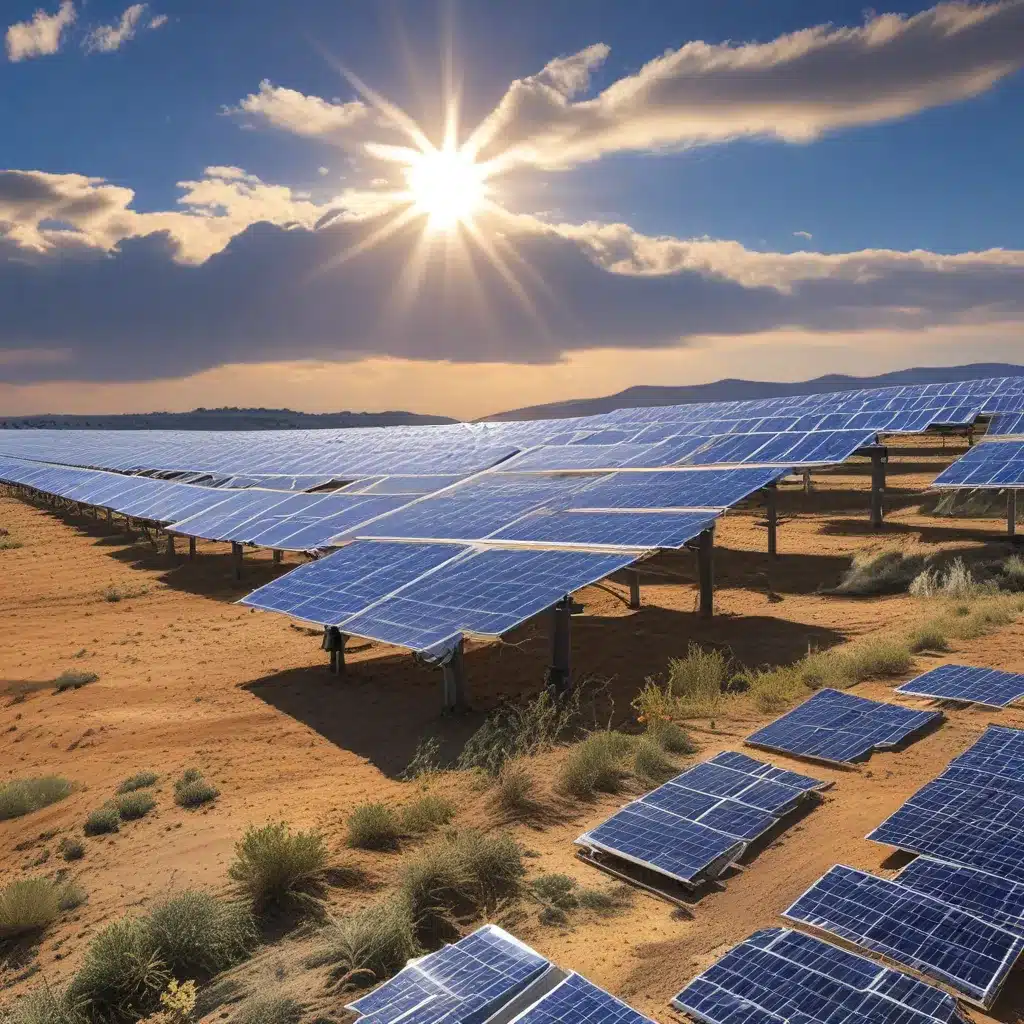
Conquering the Solar Summit: Solara’s Climb to the Top
I’ll never forget the day I first set foot on Solara’s headquarters. As I walked through the doors, the energy was palpable – a hum of activity, the buzz of innovation, and a sense of purpose that permeated every corner. It was then that I realized I wasn’t just here to write an article – I was about to uncover the secret sauce behind one of the fastest-growing solar energy solutions companies in the country.
Solara’s journey to the top has been nothing short of remarkable. They’ve managed to navigate the complex landscape of renewable energy policies, emerging technologies, and a rapidly evolving market to become a true powerhouse in the utility-scale solar sector. And at the heart of their success lies a relentless focus on one key driver: Renewable Portfolio Standards (RPS).
Unpacking the RPS Puzzle
For the uninitiated, Renewable Portfolio Standards are state-level policies that require utilities to procure a certain percentage of their electricity from renewable sources, such as solar, wind, and hydropower. These standards have been a game-changer for the solar industry, providing a stable and predictable demand for renewable energy that has fueled unprecedented growth.
As I dove into Solara’s strategies, I was struck by the sheer depth of their understanding of these policies. “RPS are the backbone of our business,” explained Sarah, Solara’s VP of Policy and Regulatory Affairs. “We’ve made it our mission to stay ahead of the curve, anticipating changes and positioning ourselves to capitalize on new opportunities.”
Solara’s RPS Playbook
One of the core elements of Solara’s RPS strategy is their focus on diversification. “We don’t just target one or two states,” Sarah told me. “We have a presence in over 20 states with active RPS policies, and we’re constantly expanding our reach.” This geographic spread not only mitigates risk but also allows Solara to leverage best practices and lessons learned across different markets.
Another key aspect of their approach is a deep dive into the nuances of each state’s RPS policy. “Every state is unique,” Sarah emphasized. “The targets, timelines, and even the specific renewable energy credits (RECs) that qualify can vary significantly. We have a dedicated team that tracks these details and ensures we’re always positioned to meet the requirements.”
But Solara’s RPS strategy goes beyond simply reacting to policy changes. They’re also proactive in shaping the regulatory landscape, working closely with policymakers and industry groups to advocate for policies that drive utility-scale solar growth.
According to the latest Solar Market Insight report, the utility-scale solar segment has been the standout performer in the industry, installing a remarkable 98 GWdc in the first quarter of 2024 – more than the annual total for this segment just a few years ago. And Solara has been at the forefront of this surge, leveraging their RPS expertise to secure a significant share of these lucrative contracts.
Navigating the Challenges
Of course, the path to success hasn’t been without its challenges. As the Pennsylvania Solar Future Plan highlights, the rapid growth of the solar industry has also brought its fair share of obstacles, from grid integration and transmission issues to regulatory hurdles and community resistance.
But Solara has proven adept at navigating these obstacles, thanks in part to their deep bench of technical experts and their ability to forge strategic partnerships. “We don’t just build solar farms,” Sarah told me. “We work closely with utilities, grid operators, and local communities to ensure a seamless integration and address any concerns that arise.”
One example of this collaborative approach is Solara’s work in California, where they’ve been at the forefront of the state’s push for renewable energy. Despite the recent setback with the CPUC’s decision to reject a proposed new program, Solara has remained steadfast in its commitment to the Golden State, working tirelessly to shape new policies and find innovative solutions to the challenges.
Powering the Future with Utility-Scale Solar
As I left Solara’s headquarters, I couldn’t help but feel inspired by the company’s unwavering dedication to driving utility-scale solar growth. It’s a mission that extends far beyond the bottom line, reaching into the very heart of the global fight against climate change.
“We’re not just building solar farms,” Sarah had told me, her eyes shining with conviction. “We’re building a sustainable future, one megawatt at a time.” And with Solara’s RPS expertise, innovative strategies, and relentless commitment to progress, I have no doubt they’ll continue to lead the charge in this critical endeavor.
Solara’s journey is a testament to the power of renewable energy and the transformative impact that a company can have when it sets its sights on a higher purpose. As the world increasingly turns to solar as a clean, reliable, and cost-effective energy source, Solara’s strategies for navigating the complex RPS landscape will undoubtedly play a crucial role in shaping the future of our energy landscape.


